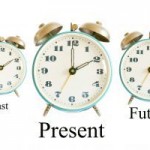Remix: Earthquakes, Bright and Shiny Objects, One Speed Ponies, & Time Travel
 Pieces have been chosen. Dates have been set. Arrangements have been made. Yep, we are working toward spring masterclasses, recitals, and end of the year piano exams all right. In the last few months, nearly everyone who has walked in the studio door has had issues with rhythm. Cosmic unity? Sunspots? The after effects of flu? Whatever the reason, I found myself talking a lot about musical bones, bodily bones, and the messes that happen without structure.
Pieces have been chosen. Dates have been set. Arrangements have been made. Yep, we are working toward spring masterclasses, recitals, and end of the year piano exams all right. In the last few months, nearly everyone who has walked in the studio door has had issues with rhythm. Cosmic unity? Sunspots? The after effects of flu? Whatever the reason, I found myself talking a lot about musical bones, bodily bones, and the messes that happen without structure.
As many of you know, I have occasionally referred to myself as the Queen of Transfer Students (see my Essential Skills for the Developing Pianist parts 1, 2, & 3). It is a great joy to help students attain the next level in their musical journeys. The downside is that you also inherit some questionable habits—baggage, if you like—that come along with each student.
Rhythm is one of the largest and most persistent sources of pianistic baggage I have ever encountered. When the components of rhythmic structure have not been attended to as a student progresses, it can be nearly impossible to move forward. It is like hitting the proverbial brick wall. So, here are some what I believe to be the origins, symptoms, and cures of several types of rhythmic messes.
The good news? Students often exhibit several of these messes simultaneously. Joy!
Mess: Distraction By The Bright And Shiny
Symptom: Rhythmic integrity fails when technique, reading and the experience of the sounds in the ear come first and rhythm is imposed second. Don’t think only music readers have this trouble. Those who learned by ear, particularly in the elementary and early intermediate years also encounter this distraction when they begin to read.
Cure 1: Equal emphasis on pitches and rhythm from the get-go, by ear or by eye. I tell my students they only got 50% correct on their piece when the pitches are right but the rhythm is all over the place. They are usually shocked. Of course, with beginners and those who have real trouble keeping a beat you need to have reasonable expectations which you raise as the student gains mastery.
Cure 2: Don’t practice too fast. Be sure the notes and the beat can be attended to simultaneously. Here is a great article on slow practice and why simply playing slowly won’t get you all the way to your performance goals, by violinist Stefan Jackiw.
Cure 3: Be sure the music is not too challenging- especially difficult with a newer transfer student. I give my new transfers music on several levels at first and be sure they know that this is so we can get to know each other.
Mess: One Speed Pony
Symptom: There is plenty of rhythmic integrity but only one speed for everything. Interestingly, some may be fast ponies, some slow, some medium. It doesn’t seem to have anything to do with the actual tempo used- just that there is only one. Usually those who have this trouble cannot manage a ritard, a tempo, fermata, or simple rubato either. I personally think in some cases that this has something to do with the nervous systems of those affected. I know that when I practice with the metronome there are sometimes tempos that I simply cannot achieve. I can accurately play both faster and slower than that tempo with the metronome so it is not a personal limit of any kind. (Cue the music for Twilight Zone here…)
Cure 1: A short passage assigned each week to be played at several different tempi with the metronome. At first the assigned tempi need to be highly contrasted for success.
Cure 2: Clap along to recorded music for 15 minutes daily. The tempi need to be varied and someone with real difficulty may need to clap along to various metronome tempi first before being let loose on actual music. Supervision by someone who can reliably keep a beat at many tempi may be needed for this activity.
Cure 3: Patience and perhaps Yoga or Meditation (for you). Alternatively, one way ticket to a tropical destination of your choice.
Mess: Time Travel
Symptoms: Loss of rhythmic integrity due to shifting subdivisions, sudden rhythmic complications over a patterned accompaniment, dynamic changes, and changing meters. Music may be sped up when the dynamic is louder and slowed when softer.
Cure 1: Develop a sense of music as it happens in time. Those who are in Band, Choir, and Orchestra know that musical time passes at the same rate for all those in the ensemble despite the fact that the individual parts differ. They know that if they speed up time (rush or cheat on rests or long notes) they will be done before everybody else and effectively have leaped forward in time. Conversely, if they slow down, add beats, or hesitate they will still be playing when everyone else is done- effectively going back in time. Some pianists regularly manage to avoid this reality and time travel freely and often.
Cure 2: Write in the counts, with subdivisions between the two staves right over or under the pitches as they occur rather than in a straight line. Use large numbers or symbols when the hands play together. This helps reinforce the concept that the two parts (hands) are participating in a whole and moving through time together. It also sets up future success in managing multiple voices. I use the example that between 8 and 9 am, one person in the family could be in Math class, another driving to work, and a third sleeping in, but, it is the same 8-9 am for everybody.
Cure 3: Dose of One Speed Pony: Cure 1. Add dynamics to the mix. Pair slow with loud and fast with soft. Once this is mastered mix ritardandos with crescendos and accelerandos with decrescendos.
Cure 4: Call NASA and tell them you have found the secret to time travel or maybe parallel universes.
Mess: Earthquakes
Sometimes, once a pianist is close to performance tempo, seismic instabilities can appear, seemingly without warning. Sometimes these is due to the need to think in longer groupings. Other times they can be due to the fact that rhythmic devices simply sound different at a higher rate of speed. (of course, rhythmic instabilities can also be due to technical issues but that is, as they say, another blog post)
Understanding how a composer uses rhythm and meter to create character and mood is one of the keys to helping any pianist overcome rhythmic instabilities. Everyone’s rhythm and rhythmic memory can be strengthened by attending to how rhythm, melody, and harmony work together to move a piece of music forward or hold it back.
Cure 1:
Illustrating the importance of rhythm in the context of a single piece is an important first step in helping students recognize seismic instabilities and fix them. Ask questions during the lesson. Why is the rhythm suddenly full of half notes here? How do these dotted notes change the character in this passage? What do those 4 rolled chords with fermatas achieve musically? How would this passage be different if it was in 4/4? What would you change about the rhythm to make this piece about tigers instead of flowing water?
Cure 2:
Create listening activities for group lessons/studio classes that emphasize rhythm and meter. Choose recordings of short passages with clear rhythmic intention at first and then branch out. Be sure you have copies of the score for everyone to look at. You can also assign passages to individual students or small groups ahead of class and have them lead a discussion and/or give their own insights. This also works well as a compare/contrast activity.
Cure 3:
Have students give peers comments based only on rhythm during studio classes/group lessons. Alternatively, consider asking each person to formulate a question to ask after a person performs. Questions/comments might include how rhythm helped create the mood, surprised us, kept everything from becoming chaotic, or told us something was about to happen. Earthquake cure 3 works best after first using cures 1 & 2.
Parts of this post were originally published in March of 2011.


